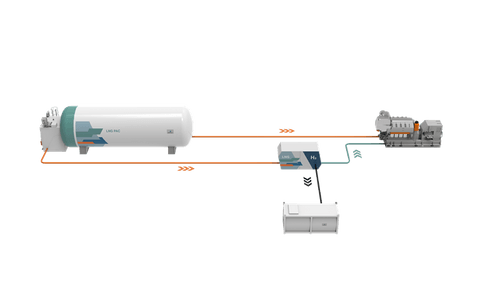The approval of the Inflation Reduction Act and the increased media coverage of the tax equity market has spurred a wave of Fortune 500 companies with large tax bases seeking to participate in the clean energy tax equity market.
But when it comes to tax equity and transferability for CCS projects, a knowledge gap among potential investors as well as the higher need for insurance backing those transactions is still holding back the market, panelists said at Infocast’s CCS Decarbonization Summit yesterday in Houston.
The ReSource database is tracking roughly 200 projects involving CCUS in North America.
Fortune 500 awareness
“One big impact that the IRA had was general awareness about these tax credits for all the Fortune 500 companies,” Bryen Alperin, a managing director at Foss & Company, in reference to the transferability market. “It’s been in the news, and if they weren’t doing it already, their C suite and their board is asking, why aren’t we doing it?”
Aperin added that the sales cycle for tax equity transfers has proven to be shorter than traditional tax equity. For a traditional tax equity deal involving a major corporation, it would typically take between one and three years of education and approvals. “We’ve seen groups on the transferable credit side jump in in a few months from start to finish.”
The entrance of large corporations into the tax credit transferability market could also serve as a precursor to some of these players getting directly involved in the tax equity market. “I’m hopeful that, long term, these transfer credits are a bit of a gateway drug to tax equity,” Alperin said.
Knowledge gap
However, the new entrants bring with them a significant knowledge gap, particularly when it comes to technical aspects of CCS, requiring additional time and approvals for tax equity transfers compared to the more-well-known wind and solar markets.
The knowledge gap with CCS, specifically around understanding CO2 leakage and tax credit recapture risk, could hold back the market for this technology given the availability of credits for wind and solar deals, according to David Heikkenin, CEO of WhiteHawk Energy.
A CCUS project that captures 10 million tons of CO2 per year could generate $850m per year in tax credits – enormous for the tax equity market. “And then you have to go in and talk to somebody that’s going to buy that and potentially risk their career,” he said, adding that some buyers might not want to put in the time to understand the project’s risks when they are already knowledgeable about solar and wind.
Heikkenin also noted that corporate tax equity investors take the view of environmentalists, viewing CCS as a stopgap measure. “We’re going to electrify everything, so should I spend my time and energy closing that knowledge gap around something that has some uncertainty?”
He referred to a tax credit transfer deal negotiation where the buyer and seller had differing views on the project’s uncertainties amounting to 10 points of discount “at a minimum,” making the deal untenable.
Insurance
One factor that could help to get the market off the ground is an insurance product that backs the tax equity transfer for CCS projects.
“When you layer in this whole concept of recapture and leaking CO2 into the atmosphere, that’s a bit of a scary proposition” for potential tax equity investors or buyers, according to Jerry Smith of Atlantic Global Risk, an insurance provider.
Smith added that, in addition to providing insurance, the process of getting insured provides another set of experts with eyes on the project that can help the principal buyers of the tax credit get comfortable and reduce the knowledge gap.
Still, given the sheer number of solar and wind credits that are available and transacting at a discount of around 92 cents on the dollar – with insurance – the discount for CCS will be even greater, Smith said.
Beyond getting comfortable with the technical aspects of the investment, he added, the most worrying thing about CCS tax credit transfers for investors is the risk of recapture stemming from a leak of CO2 into the atmosphere.
Recapture from leakage is built around a rolling three-year construct: recapture itself is three years, but there’s also an intro-year leakage question, according to Smith.
“Recapture means the net negative injections that happen in a particular year,” he said. For example, if you put 1 million tons of CO2 into the ground and 1.5 million tons leaks, recapture is 500,000 tons of CO2. And if a developer has obtained tax credits on an equivalent amount of tonnage in the previous three years, those amounts can be clawed back.
“That’s a scary proposition for the tax director” at the Fortune 500 company at the other end of the transaction, Smith said, but an insurance policy would cover that in its entirety. “[The insurance policy] also will make sure that once you inject it in that fourth year, if you put the million tons in the ground, that that is money good as well. So once it passes through the wellhead and gets monitored and tabulated, that’s a good credit.”
He added: “That’s the primary gap bridger that the [insurance] policy provides – it gives you certainty about once [the CO2 is] in there and once you pay for your tax credit, it’s not going to ever go the other direction.”






